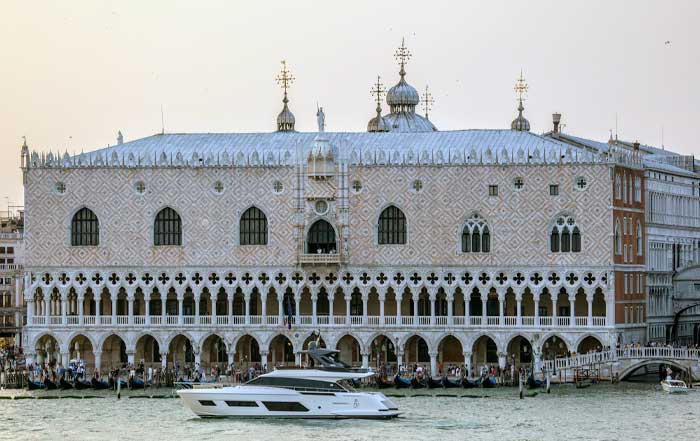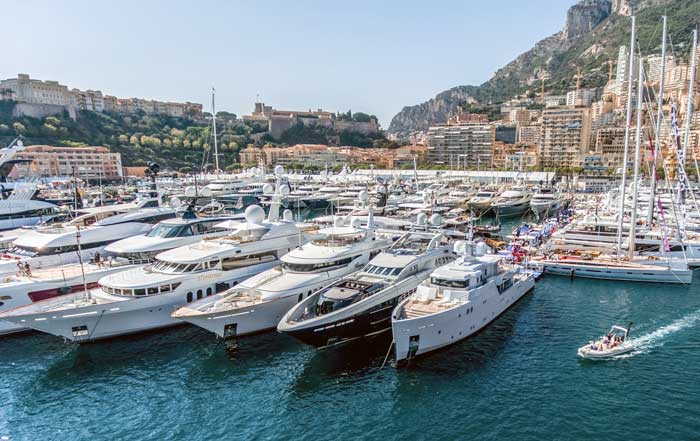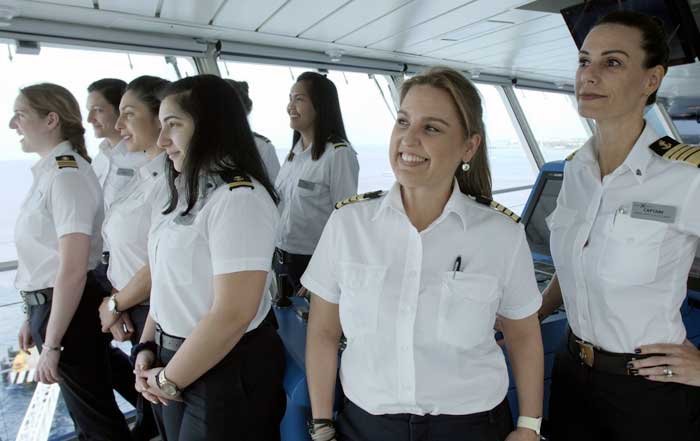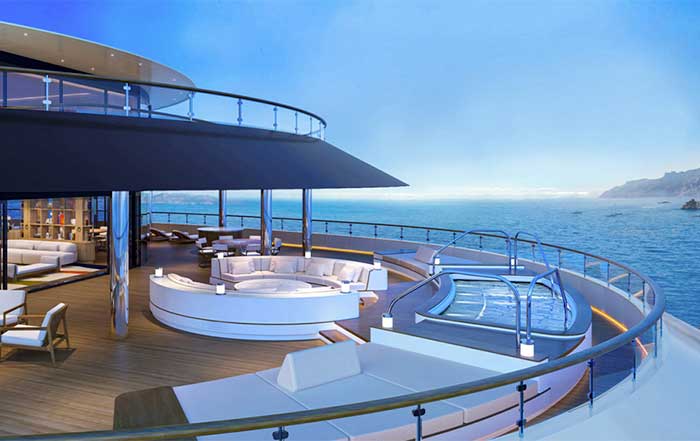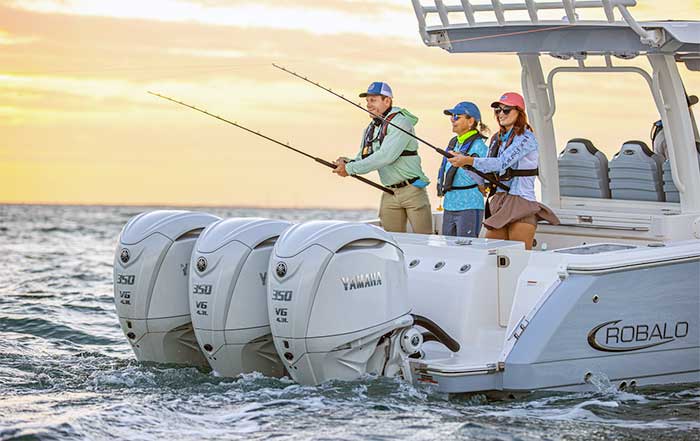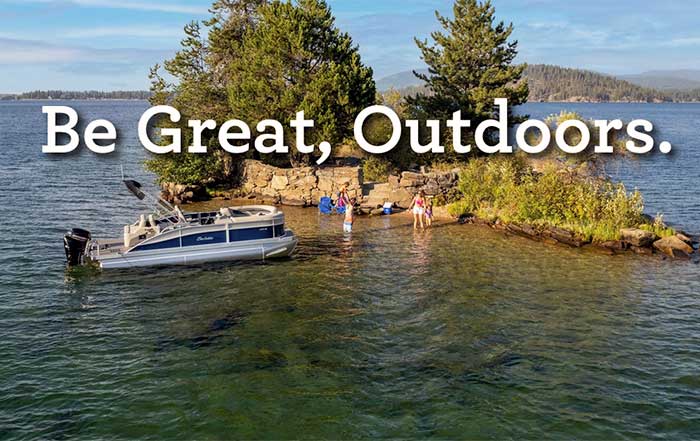In 2025, the global yachting and boating industry stands at a historic turning point. The rise of electric propulsion systems, hydrogen-powered vessels, and advanced hybrid yachts is transforming not only how boats move through the water but also how the industry defines luxury, innovation, and sustainability. What was once a niche segment reserved for small tenders or experimental craft has rapidly evolved into a mainstream movement embraced by major shipyards, technology companies, and forward-thinking owners. The transition from combustion engines to clean propulsion reflects a deeper awareness of the ocean’s fragility and a collective effort to preserve it for future generations. On Yacht-Review.com, this transition is not simply a technical evolution but a cultural shift redefining what it means to cruise responsibly.
The Electrification of the Seas
Electric boats have long been considered a symbol of innovation, but recent breakthroughs in battery efficiency, lightweight materials, and maritime charging infrastructure have accelerated their adoption across continents. Industry leaders such as X Shore, Candela, and Torqeedo have demonstrated that high-performance electric propulsion can coexist with refined design and practical range. The Swedish company Candela, for example, utilizes hydrofoil technology that allows its boats to “fly” above the water, reducing drag and dramatically extending range. These advancements represent a convergence between sustainability and engineering elegance—a trend that aligns closely with the values of yacht owners seeking a more conscious and futuristic approach to leisure at sea.
For those interested in reviewing technical innovations, Yacht Review’s technology section offers in-depth insights into how electric propulsion systems are evolving (explore more on Technology). The conversation now extends beyond small electric runabouts to include large-scale luxury yachts capable of traversing oceans on renewable energy.
Battery Technology and Energy Storage Evolution
Battery capacity has always been the limiting factor in the electrification of marine transport. However, the past three years have witnessed monumental advances in solid-state battery chemistry and energy density optimization, making electric yachts not only feasible but also highly competitive. Companies such as CATL, Tesla Energy, and Northvolt have driven forward marine-grade battery solutions that deliver longer life cycles and faster charging times.
At the same time, integration with renewable power sources—notably solar and wind—has allowed for onboard microgrids that maintain power autonomy even in remote waters. The growing use of regenerative braking systems on electric drives, which recharge batteries using propeller resistance during deceleration, has added an extra layer of efficiency. In essence, the electric yacht of 2025 is not merely an emission-free vessel; it is a self-sustaining power ecosystem.
For enthusiasts seeking more detailed performance and range comparisons, Yacht Review’s boat reviews section provides expert analysis of newly launched electric models (see Reviews).
Hydrogen Propulsion and the Promise of Zero Emissions
While battery-powered boats dominate the early phase of this green revolution, hydrogen fuel cell technology is quickly emerging as the next frontier. Pioneering shipyards such as Lürssen, Feadship, and Benetti are actively investing in hydrogen propulsion systems capable of delivering the range and power demanded by large superyachts. In 2024, Lürssen’s Project Cosmos drew global attention when it became one of the first superyachts to integrate a fully operational hydrogen-electric hybrid propulsion system. Using fuel cells that combine hydrogen with oxygen to produce electricity, the yacht achieves near-silent cruising with only water vapor as its byproduct.
Hydrogen’s appeal lies in its scalability and efficiency for long-range cruising. As global infrastructure improves—with initiatives such as the Hydrogen Council and H2Ports supporting refueling stations in Europe and Asia—the potential for a truly emission-free maritime sector becomes increasingly tangible. The combination of electric and hydrogen technologies may well represent the optimal hybrid model for luxury yachting in the next decade.
Learn more about the broader implications of hydrogen energy on global transport from resources such as the International Energy Agency and Hydrogen Europe.
Hybrid Yachts and Transitional Technologies
Despite the growing excitement around full electrification, hybrid systems remain the dominant bridge technology in 2025. These vessels combine diesel generators with electric propulsion and energy recovery systems, allowing yachts to operate quietly in harbor zones while still achieving transoceanic range when necessary. The Sunreef 80 Eco, for instance, exemplifies this balance—its solar panels seamlessly integrated into the hull and superstructure generate up to 40 kWp of clean power, significantly reducing reliance on fossil fuels.
Hybrid systems have become the pragmatic solution for owners not yet ready to embrace full electric operation but eager to minimize their carbon footprint. They also offer redundancy—a critical safety feature for long-distance voyaging. The integration of AI-assisted energy management systems, such as those developed by ABB Marine & Ports, ensures that power distribution between the engines, batteries, and auxiliary systems remains optimally efficient.
These incremental innovations form the core of sustainable yacht design, and readers can discover more about evolving yacht aesthetics and functionality in Yacht Review’s design coverage (see Design).
Global Regulatory Pressures Driving Change
The transformation toward electric and hydrogen-powered boats is not only driven by consumer demand but also by mounting regulatory pressures. The International Maritime Organization (IMO) continues to tighten its emission targets, requiring vessels to achieve net-zero greenhouse gas emissions by 2050. Regions such as the European Union have introduced strict port entry requirements and environmental levies that penalize high-emission vessels. Norway, a leader in maritime electrification, has even mandated that all cruise and ferry traffic within its UNESCO-protected fjords must be emission-free by 2026—a policy that has accelerated global adoption.
These regulations are reshaping the way yacht manufacturers, naval architects, and propulsion engineers approach new builds. Compliance has evolved from an obligation into an opportunity for differentiation, with forward-thinking shipyards using sustainability as a brand-defining feature. For ongoing developments in policy and compliance, Yacht Review’s business section offers timely insights (see Business).
Shipyards Leading the Green Transformation
The world’s leading yacht builders are no longer content to rely on traditional engineering. Benetti, Sanlorenzo, Heesen, Feadship, and Oceanco have each unveiled new initiatives focused on sustainability. Sanlorenzo’s 50Steel, launched in 2024, integrates methanol fuel-cell technology for auxiliary power, while Feadship’s Pure Concept aims for full zero-emission cruising through hydrogen-electric hybrid systems. Meanwhile, Heesen’s BlueNautech division is exploring recyclable hull materials and closed-loop waste management systems onboard.
This wave of innovation extends beyond Europe. In the United States, Arc Boats and Pure Watercraft are driving electric recreational boating into mainstream markets, while Asian manufacturers in Japan, Singapore, and South Korea are focusing on compact, autonomous electric vessels for urban waterways. The industry’s evolution is increasingly global, reflecting diverse approaches to the same universal goal: a cleaner ocean.
For continuous updates on these new launches and innovations, readers can stay informed through Yacht Review’s news and global coverage (see News, see Global).
🌊 Green Yachting Evolution Timeline
The transformative journey from combustion to clean propulsion
Advanced Materials and Sustainable Construction
The transformation toward green boating is not confined to propulsion systems; it extends to every component of yacht construction. In recent years, the use of lightweight composites, bio-based resins, and recycled metals has reshaped the environmental footprint of yacht manufacturing. Traditional fiberglass, while durable, poses challenges for recycling and disposal. In response, shipyards such as Baltic Yachts and Greenline Yachts have adopted next-generation materials like flax fiber composites and sustainable epoxy systems derived from plant-based sources. These materials not only reduce carbon emissions during production but also enhance performance through weight reduction and improved strength-to-weight ratios.
The sustainability push also influences interior design philosophies. Eco-conscious materials such as FSC-certified woods, vegan leathers, and recycled textiles are now standard in many modern builds. Partnerships between yacht designers and environmental technology firms—like the collaboration between Zaha Hadid Architects and Rossinavi on the Sea Cat project—illustrate how innovation and artistry merge in pursuit of sustainability. Readers can discover similar design breakthroughs in Yacht Review’s design and lifestyle sections (see Design, see Lifestyle).
Moreover, the concept of modularity has taken center stage. By integrating 3D printing and modular component systems, shipyards can reduce waste during production and streamline maintenance operations. Entire cabins, galleys, and control systems can be swapped, upgraded, or recycled without dismantling the entire vessel. This adaptability reflects a growing understanding that sustainability must encompass the entire life cycle of a yacht—from conception and construction to operation and eventual decommissioning.
The Role of Artificial Intelligence and Smart Energy Management
One of the most significant innovations in modern boating lies in AI-driven energy optimization. Sophisticated onboard systems now analyze propulsion loads, weather data, current patterns, and passenger needs to determine the most efficient cruising parameters. These AI models, developed by companies like ABB, Siemens Marine, and Volvo Penta, adjust energy consumption in real time, automatically optimizing battery discharge rates and generator cycles to extend range while minimizing emissions.
For example, the ABB Ability Marine Pilot Control system provides automated decision support that reduces human error and enhances operational efficiency. Integration with GPS, wind sensors, and route-planning tools enables captains to maintain a delicate balance between speed and sustainability. The rise of such smart systems mirrors the automation trends reshaping every aspect of transportation—from cars to aircraft—and ensures that luxury yachting remains at the forefront of technological sophistication.
Yacht owners seeking a deeper look into the future of marine electronics and propulsion systems can explore Yacht Review’s technology section (see Technology), where the convergence of AI, autonomy, and clean energy continues to define the next era of boating.
Autonomous Electric and Hybrid Vessels
The integration of autonomy in electric boats represents one of the most exciting developments in maritime innovation. Advanced navigation systems, LIDAR sensors, and machine learning algorithms now allow vessels to operate semi-autonomously, reducing fuel waste caused by inefficient navigation and enhancing overall safety.
Projects like Sea Machines’ AI-RCL system and Rolls-Royce’s SmartShip technology are bringing autonomous electric vessels closer to reality. In regions such as Scandinavia, fully autonomous electric ferries are already operational, shuttling passengers quietly and efficiently across coastal routes. This level of innovation hints at a near future where private yachts may feature fully autonomous navigation modes, enabling owners to enjoy seamless journeys guided by data-driven intelligence rather than manual control.
For enthusiasts curious about the evolution of cruising technology, the Yacht Review cruising section (see Cruising) offers continuous coverage of navigation systems, smart cockpit interfaces, and the shift toward automation.
The Rise of Solar-Powered and Wind-Assisted Yachts
Electric propulsion is complemented by renewable energy systems that harness the sun and wind. Solar panels, once seen as auxiliary charging devices, are now seamlessly integrated into hulls, decks, and sails. Builders like Silent Yachts and Sunreef Yachts have demonstrated that solar catamarans can achieve transoceanic range using only renewable energy. The Silent 80 Tri-Deck and Sunreef 100 Eco, for instance, feature solar arrays capable of generating enough energy to power propulsion systems, galley equipment, and entertainment suites without reliance on fossil fuels.
Parallel innovations are taking place in wind-assisted propulsion. The development of rigid sails, rotor sails, and kite systems—pioneered by companies such as Oceanco and Airseas—offers a new dimension of efficiency. These technologies blend ancient maritime principles with modern engineering precision, reducing energy consumption while adding to the yacht’s aesthetic appeal. Combined with battery-electric systems, wind and solar energy create the possibility of entirely emission-free voyages, even across vast distances.
Learn more about global wind-propulsion initiatives at International Windship Association and renewable energy research from DNV.
Infrastructure and Charging Ecosystems
As electric and hybrid vessels multiply, the global challenge of marine charging infrastructure has taken center stage. The success of electrification hinges on reliable access to shore-based charging and refueling facilities. Europe and North America have made notable progress, with ports such as Amsterdam, Oslo, and San Francisco now featuring high-capacity marine charging stations. The Aqua SuperPower network continues to expand across the Mediterranean and Caribbean, providing fast-charging options for both private yachts and charter fleets.
Meanwhile, coastal regions in Asia and Oceania are following suit. Singapore’s Marina at Keppel Bay has announced plans to install a network of ultra-fast marine chargers by 2026, reinforcing Southeast Asia’s role in supporting sustainable yachting. The collaboration between port authorities, governments, and private-sector innovators underscores the shared vision of electrifying maritime transportation globally.
The evolution of this infrastructure signals a fundamental shift not only for private ownership but also for commercial and charter operations. As more electric superyachts and tenders enter the market, charging logistics and range planning will become as routine as weather forecasting. Readers interested in how global ports are preparing for the green transition can find insights within Yacht Review’s travel and global coverage (see Travel, see Global).
The Charter Market’s Green Revolution
Sustainability is no longer limited to individual owners—it is now a core expectation in the charter market. Charter clients increasingly demand environmentally responsible options that align with their values without compromising luxury. Charter companies like Fraser Yachts, Burgess, and Northrop & Johnson have expanded their fleets to include hybrid and electric yachts, offering experiences that combine indulgence with eco-awareness.
The allure of silent cruising, cleaner air, and the absence of diesel fumes has redefined what premium yachting means. Clients are also attracted to the unique selling proposition of offsetting carbon emissions through certified environmental programs. As yacht chartering becomes a lifestyle choice rather than an occasional luxury, sustainability serves as a key differentiator.
For ongoing analysis of market dynamics and luxury trends, readers can explore Yacht Review’s business and lifestyle sections (see Business, see Lifestyle).
Regional Perspectives: How the World Is Adapting
While the push toward sustainable yachting is global, regional trends reveal distinct pathways shaped by policy, innovation ecosystems, and consumer behavior. In Europe, the movement has matured faster than anywhere else, with Norway, Sweden, the Netherlands, and France leading the charge. Northern European shipyards are collaborating closely with renewable energy companies to ensure that new marinas and yacht clubs are equipped for electric and hydrogen refueling. The Amsterdam Boat Show and Monaco Yacht Show have become key platforms for unveiling cutting-edge sustainable models, symbolizing the fusion of luxury and environmental responsibility.
In North America, innovation is being driven primarily by startups and entrepreneurs. California’s Arc Boats, Washington-based Pure Watercraft, and Florida’s Ingenity Electric are transforming smaller craft and sport boats with all-electric powertrains. The United States and Canada are also investing in research partnerships with universities and the private sector to develop green marina initiatives and electric infrastructure for coastal tourism. As the Great Lakes region increasingly positions itself as a hub for sustainable boating, the integration of clean technologies is spreading inland as well as along the coasts.
Asia-Pacific nations are catching up rapidly. Japan’s investment in hydrogen technology, China’s expansion of electric propulsion production lines, and Singapore’s emerging role as a clean-tech maritime hub reflect a broad regional shift. In Australia and New Zealand, eco-cruising and sustainable marine tourism are gaining momentum, as local builders adapt hybrid systems suited for both leisure and commercial vessels. The Asia-Pacific market’s agility, combined with an appetite for high-tech solutions, will likely accelerate the pace of green maritime transformation over the next five years.
For international readers and yacht owners navigating regional opportunities, Yacht Review’s global section (see Global) provides a detailed look at how these transitions unfold across continents, bringing valuable perspective on emerging technologies and new cruising destinations.
The Economic Landscape and Investment Potential
The growing emphasis on sustainability is also reshaping the financial foundation of the yachting industry. Green technology investment, once seen as an environmental obligation, has become a powerful driver of economic growth. Banks and private investors now reward shipyards and suppliers that align with ESG (Environmental, Social, and Governance) principles. The inclusion of sustainable yachting within larger frameworks of blue economy investment and ocean conservation finance is attracting institutional capital.
In 2025, several major funds—such as the Ocean Risk and Resilience Action Alliance and The Sustainable Blue Economy Finance Initiative—are providing financial backing to eco-yacht ventures. This funding enables companies to scale innovation, from electric motor research to advanced hull design. Moreover, governments in regions like the EU and the United Kingdom have introduced tax incentives and grants for clean marine technology adoption, reinforcing the financial case for sustainability.
In the private sector, luxury brands are also taking notice. Companies like LVMH and Richemont, traditionally known for their influence in fashion and luxury goods, are expanding partnerships with marine brands to incorporate sustainable materials and carbon reduction strategies into their portfolios. This cross-industry collaboration between luxury lifestyle, technology, and environmental stewardship demonstrates that the green shift has become integral to the future of luxury mobility. Readers can explore related financial insights and emerging partnerships in Yacht Review’s business coverage (see Business).
Social Impact and the Changing Culture of Ownership
Beyond technology and economics, the rise of electric and hybrid yachts represents a profound cultural change in ownership values. Yacht owners in 2025 are younger, more diverse, and significantly more environmentally conscious than their predecessors. The traditional perception of luxury as excess is being replaced by a concept of luxury as responsibility—a reflection of social values that prioritize authenticity, innovation, and stewardship of the planet’s resources.
This generational transition has also led to new forms of ownership, including fractional yacht ownership and shared electric fleets, making yachting more accessible while promoting responsible usage. Platforms such as SeaNet, Yachtico, and Simpson Marine Shared Ownership offer flexible access to sustainable yachts, particularly appealing to entrepreneurs and families seeking curated experiences without the long-term environmental burden of full ownership.
Moreover, coastal communities are increasingly benefiting from the shift toward sustainable yachting. Electric marinas create new employment opportunities, while eco-tourism initiatives promote local engagement and environmental education. As yachts become ambassadors of clean innovation, their presence in global ports reinforces positive social and environmental narratives. To understand how these cultural shifts are influencing family and community engagement at sea, readers can explore Yacht Review’s family and community sections (see Family, see Community).
Ocean Preservation and the Yachting Industry’s Responsibility
The luxury yacht sector, often scrutinized for its carbon footprint, has the potential to become one of the ocean’s greatest allies. The adoption of electric and hydrogen-powered systems is part of a broader movement toward ocean stewardship. Yacht owners, shipyards, and organizations are partnering with marine foundations and scientific institutions to monitor water quality, fund coral restoration, and support sustainable tourism.
Initiatives such as Blue Marine Foundation, Oceana, and Mission Blue continue to collaborate with private yacht owners to facilitate research expeditions and ocean clean-up operations. The increasing integration of marine laboratories onboard luxury vessels—such as those seen in Feadship’s Project 821 and Benetti’s explorer-class yachts—illustrates the growing union between science and luxury. These collaborations underscore the notion that the yachting community can play a vital role in combating climate change and biodiversity loss.
For a closer look at sustainability practices and ocean conservation projects, readers can visit Yacht Review’s sustainability page (see Sustainability), where ongoing environmental initiatives are showcased in detail.
Future Horizons: Electric Aviation and Cross-Modal Integration
The innovations driving electric and hybrid yachts are also influencing other mobility sectors. The emergence of electric vertical takeoff and landing (eVTOL) aircraft and hydrogen-powered submersibles highlights the growing convergence between air, sea, and underwater exploration. Yacht designers are already integrating eVTOL landing pads into new superyacht designs, allowing guests to arrive at remote destinations in a completely carbon-neutral manner.
Companies like Lilium, Archer Aviation, and Volocopter are partnering with shipbuilders to create seamless transitions between air and sea mobility. Meanwhile, advancements in underwater drones and compact submersibles powered by renewable energy—developed by firms like U-Boat Worx and OceanGate Marine Technology—are expanding the possibilities of exploration beneath the surface. The synergy between these innovations forms a larger ecosystem of sustainable luxury travel where technology enhances both environmental consciousness and human experience.
For readers interested in the intersection of future transport and yacht design, Yacht Review’s technology and travel sections (see Technology, see Travel) provide an evolving chronicle of these transformative connections.
The Ethical Future of Design and Innovation
In 2025, yacht design is no longer driven solely by aesthetics or performance—it is shaped by ethics. The world’s leading naval architects and interior designers now see sustainability as an expression of artistry and intelligence. Ethical design principles emphasize minimalism, recyclability, and adaptability. The most forward-thinking studios, including Winch Design, Espen Øino International, and RWD, are integrating regenerative systems that recycle water, manage waste efficiently, and even grow edible plants onboard.
This paradigm shift suggests that the yacht of the future will be more like a floating ecosystem—self-sufficient, harmonious with its surroundings, and technologically symbiotic with nature. The infusion of biomimicry into design, inspired by the forms and systems found in marine life, ensures that function and beauty coexist with purpose. It represents the ultimate union of engineering precision and ecological sensitivity. For those drawn to the artistry of this evolution, Yacht Review’s design and history sections (see Design, see History) explore how tradition and innovation continue to inform modern aesthetics.
Toward a Collective Vision: The Green Blue Economy
Ultimately, the rise of electric boats and green innovation in the yachting world reflects a broader global narrative—the transition to a Green Blue Economy, where maritime prosperity coexists with environmental responsibility. Governments, shipbuilders, investors, and travelers are now interconnected in a shared pursuit of balance between technological progress and planetary well-being.
By aligning luxury with sustainability, the maritime sector is not merely adapting to environmental pressures—it is redefining the essence of progress itself. The yachts of tomorrow will embody silence, efficiency, and harmony with the sea. They will represent a collective human aspiration: to enjoy the world’s oceans without harming them.
For those inspired to follow this ongoing journey of transformation, Yacht-Review.com remains a trusted guide and chronicler of this new era of sustainable maritime excellence (explore Yacht Review).
Electric Boats and Beyond: Global Innovations Steering Us Into a Green Future reminds us that progress is not measured solely in knots or horsepower, but in the quiet hum of electric propulsion gliding through blue water—proof that technology and humanity can move forward together toward a cleaner horizon.

